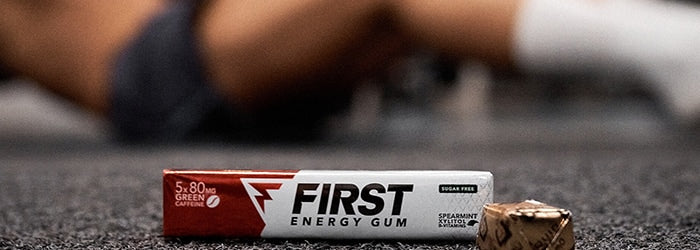Warm-up 101
The exact duration of a warm-up depends on the type of workout you are going to do. If you are going to train at low intensity you do not need to do an extensive warm-up. Usually it is enough to start slowly with, for example, jogging or cycling and after about 5 to 7 minutes build up the intensity further. However, if you have an intense workout planned or still have slight muscle soreness from a previous workout, it is a valuable addition to spend 10-15 minutes of your workout warming up your muscles. You can warm up in different ways. It is wise to start with cardiovascular exercises such as jumping jacks or a march in place, and then do some exercises that activate the muscle groups you will train later. For example, when you are going to train your upper body, it is best to pay extra attention to warming up the shoulders, core and back. This will significantly reduce your risk of injury. During that warm-up, blood circulation improves, your body temperature increases, and your heart beats faster. As a result, your joints become more flexible and more blood flows to your muscles. In addition, a warm-up is also the time to mentally prepare yourself to perform.
What about the cool-down?
It's sometimes tempting to skip the cool-down after your workout. Maybe you have a tight schedule or your workout was just incredibly hard and you'd rather not do anything for a while. At such times, you tend to skip the cool-down. Not incomprehensible, but you miss an important part of your workout which can have a negative effect on your results.
A cool-down does not have to be long. Five minutes of cooling down and stretching, in which you gradually reduce the intensity of your workout, will go a long way.
A cool-down causes your body to return to the state it was in before you began your workout. In other words, your heart rate and body temperature go down, your breathing calms down and your body relaxes again.
No cool-down is the same. Of course, it depends on which muscle groups you trained and how hard the workout was. Therefore, stretch all the muscles you used during your workout. Make slow and gentle movements and focus on breathing. Be careful though, stretching should not hurt.
What else can you do?
To train your muscles optimally, you can also pay attention to recovery outside of your workout. For example, you can take a day of rest. A massage helps to relax your muscles and promote blood circulation. Also stretching regularly outside of your workout will make your muscles and joints more flexible.
Finally, nutrition can also promote muscle recovery. Taking extra protein can make muscles stronger. Caffeine also plays a positive role in muscle recovery. For example, research has shown that taking caffeine, which makes up the liquid core of FIRST, can speed up muscle recovery while also making it stronger.

